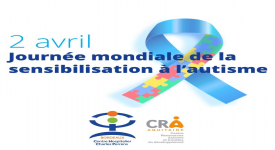Preeclampsia Onset, Days to Delivery, and Autism Spectrum Disorders in Offspring: Clinical Birth Cohort Study
JMIR Public Health Surveill. 2024 Apr 17;10:e47396. doi: 10.2196/47396.
ABSTRACT
BACKGROUND: Maternal preeclampsia is associated with a risk of autism spectrum disorders (ASD) in offspring. However, it is unknown whether the increased ASD risk associated with preeclampsia is due to preeclampsia onset or clinical management of preeclampsia after onset, as clinical expectant management of preeclampsia allows pregnant women with this complication to remain pregnant for potentially weeks depending on the onset and severity. Identifying the risk associated with preeclampsia onset and exposure provides evidence to support the care of high-risk pregnancies and reduce adverse effects on offspring.
OBJECTIVE: This study aimed to fill the knowledge gap by assessing the ASD risk in children associated with the gestational age of preeclampsia onset and the number of days from preeclampsia onset to delivery.
METHODS: This retrospective population-based clinical cohort study included 364,588 mother-child pairs of singleton births between 2001 and 2014 in a large integrated health care system in Southern California. Maternal social demographic and pregnancy health data, as well as ASD diagnosis in children by the age of 5 years, were extracted from electronic medical records. Cox regression models were used to assess hazard ratios (HRs) of ASD risk in children associated with gestational age of the first occurrence of preeclampsia and the number of days from first occurrence to delivery.
RESULTS: Preeclampsia occurred in 16,205 (4.4%) out of 364,588 pregnancies; among the 16,205 pregnancies, 2727 (16.8%) first occurred at <34 weeks gestation, 4466 (27.6%) first occurred between 34 and 37 weeks, and 9012 (55.6%) first occurred at ≥37 weeks. Median days from preeclampsia onset to delivery were 4 (IQR 2,16) days, 1 (IQR 1,3) day, and 1 (IQR 0,1) day for those first occurring at <34, 34-37, and ≥37 weeks, respectively. Early preeclampsia onset was associated with greater ASD risk (P=.003); HRs were 1.62 (95% CI 1.33-1.98), 1.43 (95% CI 1.20-1.69), and 1.23 (95% CI 1.08-1.41), respectively, for onset at <34, 34-37, and ≥37 weeks, relative to the unexposed group. Within the preeclampsia group, the number of days from preeclampsia onset to delivery was not associated with ASD risk in children; the HR was 0.995 (95% CI 0.986-1.004) after adjusting for gestational age of preeclampsia onset.
CONCLUSIONS: Preeclampsia during pregnancy was associated with ASD risk in children, and the risk was greater with earlier onset. However, the number of days from first preeclampsia onset to delivery was not associated with ASD risk in children. Our study suggests that ASD risk in children associated with preeclampsia is not increased by expectant management of preeclampsia in standard clinical practice. Our results emphasize the need to identify effective approaches to preventing the onset of preeclampsia, especially during early pregnancy. Further research is needed to confirm if this finding applies across different populations and clinical settings.
PMID:38630528 | DOI:10.2196/47396




